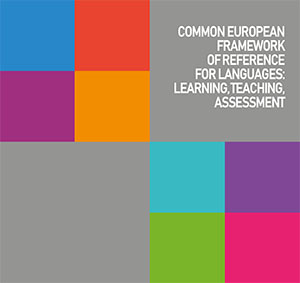Online interaction
The CEFR recognises the distinct characteristics of the types of agency language users need to effectively interact in digital environments. Digital spaces are now used naturally in personal and professional communication and networking, and the tools used in them have become recognized as valuable in language learning. Online interaction is characterized by changes in language and increasing multimodality; it involves multiple remote social actors flexibly remixing media and texts to support messages. This happens in both synchronous and asynchronous modes and often involves a blend of written and spoken interactions.
The descriptors for online interaction cover the multimodal activities typical of web use, including checking responses, spoken interaction and longer production in live link-ups, using chat, blogging or written contributions to discussion, and embedding other media. The descriptors form a basis for analysing what learners do and need in the real world in order to serve those needs in digitally-enhanced, action-oriented learning scenarios.
Videos
Watch How can the CEFRCV support the creation of (digitally-mediated) collaborative learning environments in the post-Covid context? (2023: Bernd Rüschoff) (13:28)
Watch The learner as social agent and the affordances of digital spaces (2022: Bernd Rüschoff) (23:32)
Watch The CEFR Companion volume descriptors for online interaction and transaction (2020: Bernd Rüschoff) (11:28)
CEFR Companion volume - Online interaction scales (2018: Tim Goodier) (09:22)
Workshop
Digital agency in social practice and language education: The CEFR Companion volume and online interaction (2021: Bernd Rüschoff)
Documents
Info sheet: Online interaction
Towards a socio-interactional approach to foster autonomy in language learners and users (Project e-lang) (2018: Christian Ollivier et al.)
Articles
Redesigning for mobile plurilingual futures (2022: Heather Lotherington et al.)
Capturing the multi-modality of remote communication- the new CEFR online interaction scales (pp.11-23) (2020: Tim Goodier and Enrica Piccardo)



